There are numerous similarities in the mass murder of Jews during World War II and the genocide of Armenians
(Editor’s note: The American Jewish World’s editorial style requires the capitalization of the word “Holocaust,” in connection with the destruction of European Jewry by the Nazis. Despite the point being made by the author here, that style is maintained in this article in specific references to the mass extermination of Jews during World War II.)
By MOSHE GIT
Many Jews would object to using the word “holocaust” for another people’s tragedy; however, the Hebrew word shoah simply means a grave disaster, regardless of whom it has stricken.
The concept of a holocaust is intimately linked to the charge of genocide; in both the Armenian and Jewish holocausts, genocide caused the holocaust.
OPINION
The date of April 24 was chosen to mark the anniversary of the Armenian holocaust. On that day, in 1915, the Turkish authorities arrested hundreds of Armenian intellectuals and community leaders in Istanbul. They were imprisoned and eventually liquidated.
 Tsitsernakaberd is a memorial in Yerevan, Armenia, dedicated to the victims of the Armenian Genocide. The 44-meter stele symbolizes the national rebirth of Armenians; 12 slabs are positioned in a circle, representing the 12 lost provinces in present day Turkey. In the center of the circle, at a depth of 1.5 meters, there is an eternal flame. (Photo: iStockphoto.com / Marianna Meliksetyan)
Tsitsernakaberd is a memorial in Yerevan, Armenia, dedicated to the victims of the Armenian Genocide. The 44-meter stele symbolizes the national rebirth of Armenians; 12 slabs are positioned in a circle, representing the 12 lost provinces in present day Turkey. In the center of the circle, at a depth of 1.5 meters, there is an eternal flame. (Photo: iStockphoto.com / Marianna Meliksetyan)
A number of years ago I stumbled upon a trove of materials covering this sad chapter in Armenian history; it was in the form of a couple of what appeared to be self-published books. Without hesitation, I purchased them.
I have a soft spot in my heart for anything Armenian. It all began in my childhood when I read, in Hebrew, a children’s novel where the fate of the Armenians and their similarity to Jews were addressed. Later I became intrigued and fascinated by the unique Armenian alphabet; by the fact that their Christianity predates all other forms of Christianity; and by the fact that Mount Ararat, where Noah’s ark is believed to have rested, is on their territory.
As with the Jewish people, Armenians have a large Diaspora. An unusual number of Armenians settled in Jerusalem, to the extent that a full quarter in the Old City is named after them. When I walked the streets of the Armenian Quarter in Jerusalem, I noticed many pictures depicting scenes from their holocaust, reminiscent of familiar Jewish Holocaust pictures, posted on walls.
The similarity between the Armenian holocaust and the Jewish Holocaust is multifaceted. While it is commonly accepted that the Armenian holocaust took place in 1915, this is not precise. As in the Jewish holocaust there were telltale signs in preceding years. Agitation against the Armenians began a number of decades earlier, and armed clashes and actual pogroms, in which innocents were murdered, began in 1891.
As in the Jewish Holocaust, where other nations, such as Poles, Lithuanians and Ukrainians helped the Nazis to exterminate Jews, a similar situation existed in the Armenian holocaust, where Kurds and Circassians aided the Turks.
As in the Jewish Holocaust where the Nazis practiced deportation of Jews, this was matched in the fate of the Armenians. Henry Morgenthau, a Jew and the United States ambassador to Turkey, reported in the early 20th century: “The Central Government now announced its intention of gathering the two million or more Armenians… and transporting them to this desolate and inhospitable region… The real purpose of the deportation was robbery and destruction; it really represented a new method of massacre. When the Turkish authorities gave the order for these deportations, they were merely giving the death warrant to the whole race… I’m confident that the whole history of the human race contains no terrible episode as this.”
Both holocausts, the Jewish and the Armenian, have their deniers. The Turkish government vehemently denies the Armenian holocaust or genocide, despite an abundance of reports and documents that attest to the atrocities. It is deplorable that the Israeli government yields to Turkish blackmail and cooperates with the latter in suppressing the very occurrence of the holocaust. Programs on Israeli radio and television about the Armenian holocaust were cancelled, and information about this holocaust was deleted from schools textbooks and curriculum because of government pressure.
Lastly, as with many Jewish Holocaust survivors, the survivors of the Armenian holocaust, were reticent about sharing their experience with their children, but the second and third generations became more open and vocal about what transpired. Just a couple of months ago, Varujan Voskanian, an Armenian and a third-generation survivor who had served as the minister of the treasury of Romania, published a novel (in Romanian, translated into Hebrew), The Book of Whispers, which was hailed as a masterpiece. Voskanian’s book focused on the tragedy of his people and the unrelenting attempts, by the perpetrators, to suppress it.
Just last month Turkey recalled its ambassador to the U.S. after a House committee voted to commemorate the Armenian holocaust. About a week ago, it was reported that Turkey returned the ambassador. This proves that it is possible to resist Turkey’s bullying. A lesson Israel has yet to learn.
***
Moshe Git lives in Minnetonka.









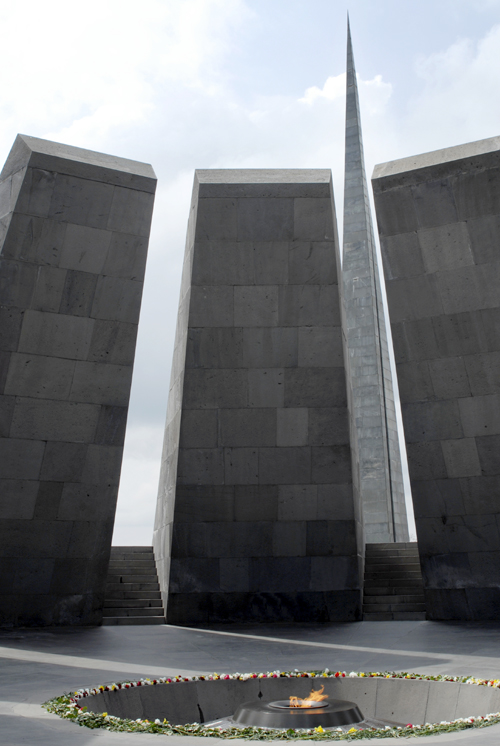 Tsitsernakaberd is a memorial in Yerevan, Armenia, dedicated to the victims of the Armenian Genocide. The 44-meter stele symbolizes the national rebirth of Armenians; 12 slabs are positioned in a circle, representing the 12 lost provinces in present day Turkey. In the center of the circle, at a depth of 1.5 meters, there is an eternal flame. (Photo: iStockphoto.com / Marianna Meliksetyan)
Tsitsernakaberd is a memorial in Yerevan, Armenia, dedicated to the victims of the Armenian Genocide. The 44-meter stele symbolizes the national rebirth of Armenians; 12 slabs are positioned in a circle, representing the 12 lost provinces in present day Turkey. In the center of the circle, at a depth of 1.5 meters, there is an eternal flame. (Photo: iStockphoto.com / Marianna Meliksetyan)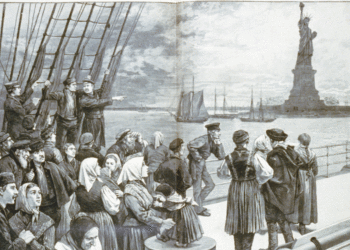
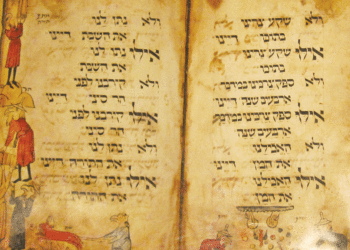
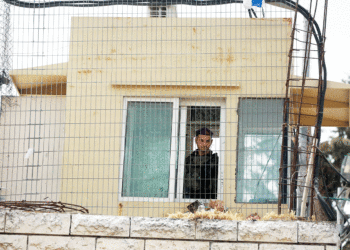
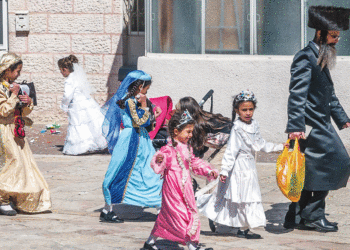
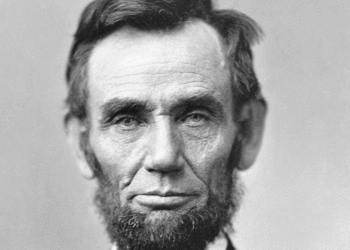
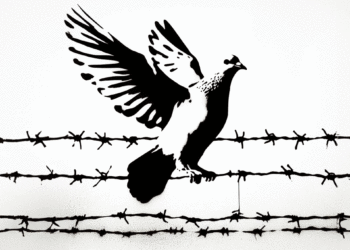





As Moshe Git aptly demonstrates, there are many parallels between the Armenian Genocide and the Holocaust. Indeed, Raphael Lemkin, who created the word “genocide” and was instrumental in the establishment of the United Nations Genocide Convention, explained that he was motivated by both the Armenian Genocide and the Holocaust.
Interestingly, Winston Churchill, writing in the early 1930’s, used the word “holocaust” in describing the Armenian Genocide, stating, “There is no reasonable doubt that this crime was planned and executed for political reasons,” and that the Turkish “war criminals” massacred “uncounted thousands of helpless Armenians — men, women and children together; whole districts blotted out in one administrative holocaust.”
A group of Boston-area Jews and Armenians has been meeting for the past two years to share our histories and to work toward U.S. recognition of the Armenian Genocide. Please visit our website at: http://www.recognizearmeniangenocide.org.
“History & Destiny of the Rivers of Eden”
I remember studying the history of Elazig, the province in Turkey where the Tigris headwaters originate, and being surprised at how recently the area had been settled; it is surrounded by very ancient settlements. In fact, a prehistoric community called Çatalhöyük, just southwest of this area may be the oldest model of known urban civilization in the world. I soon learned that this was the scene of the first wholesale slaughter of Armenians in 1915. Just prior to this time, Armenian men within the Turkish military were disarmed and either worked to death in labor battalions or systematically rounded up and executed. Without the aid of a hearty male contingent within their ranks, the Armenian population was helpless.
The Armenians were soon ordered to vacate their homes and communities, supposedly to be deported to concentration camps across the border in the Syrian Desert. However, marauding bandits conscripted by the Turkish government to mercilessly butcher these convoys of Armenian women and children. Those who were not murdered as they were being deported died of dehydration, starvation, and disease in the Syrian concentration camps. In total, some two to three million Armenians were killed during several genocides between the 1880s and the 1920s. This systematic annihilation of the predominant people of what has since become eastern Turkey seems to have been conveniently forgotten by the western media and politicians.
Reflecting on this poignant episode in history, and knowing how closely this ethnic cleansing preceded the Jewish holocaust in Europe, I mulled over the possibility of a connection between these two peoples. I discovered there was indeed a profound connection between these two people groups. When the Assyrians invaded Northern Israel around 750 B.C., they resettled Israel’s ten northern tribes in another region of the empire called Media, just as they had also relocated the Samaritan people into Israel. One hundred years later, an official report to Sargon II of Assyria spoke of people called Gimira, just west of the upper Euphrates, and north of the Taurus Mountains.19 We know from the Behistun Inscription in Iran that these Gimira were the same people as the ISKUZA or SAKKA, names thought to be a derivative of Isaac (ISS-SAAK). Also, the Behistan Inscription states that the area in which these people had been resettled had by that point been named Armenia. Six hundred fifty years later, Josephus claimed the lost tribes of Israel still inhabited an area he described to be “beyond the Euphrates” 20—in Armenia or Media! It is true that remnants of the lost tribes can be found in other countries such as Afghanistan, and India, but it appears the largest remnant settled within this Armenian territory, as evidenced by the conversion of the Khazarian Empire to Judaism in the 700s AD. Today, the Kurdish and Armenian people in this area exhibit a high incidence of a genetic marker called the “Cohen Modal Haplotype” (CMH),21 a trait found prominently among the Cohen or priestly descendents in the Jewish community.
So the Armenian Genocide that started in Elazig was actually part of a global atrocity that would eventually be carried out against all the children of Israel in the 20th century. Yet, this wasn’t the first time Jewish blood had been shed beside the headwaters of a Genesis 2 river. Most know about the harsh treatment of the Hebrew people in Egypt beside the Nile (Gihon) River before the Exodus account, but few realize that the Muslims first massacre of Jews was carried out beside the ancient Pishon River, in Medina. Here, Mohamed himself had the occupants of all three Jewish settlements—the Banu Qainuqa, the Bani Nadir, and the Banu Quraiza—either killed, deported, or distributed as slaves. Even less known are the Beta Israelies or Falasha tribe in Ethiopia (close to the headwaters of the Blue Nile), and their near extermination at the hands of the Portuguese and Ethiopian military.
Can you see a theme emerging here? Every one of the rivers listed in the second chapter of Genesis would become a place where the Hebrew people would be exiled and punished for their idolatry and unbelief. They were slaves beside the Gihon before the Exodus; they would walk beside the waters of Pishon as they wandered in the wilderness and as captives of the Islamic invasions; the ten northern tribes were taken captive to the banks of the Tigris River during the Assyrian invasion; and southern Israel was carried away to the shores of the Euphrates during the Babylonian captivity. These rivers had enormous spiritual implication, as though God was reaching out to them through His Spirit, nourishing and sustaining His people during their times of greatest tribulation. These waters of encouragement emanated from their land of promise, and would return a remnant of the people back to their homeland.
I believe the Armenians are on a age of enlightement who they really are?